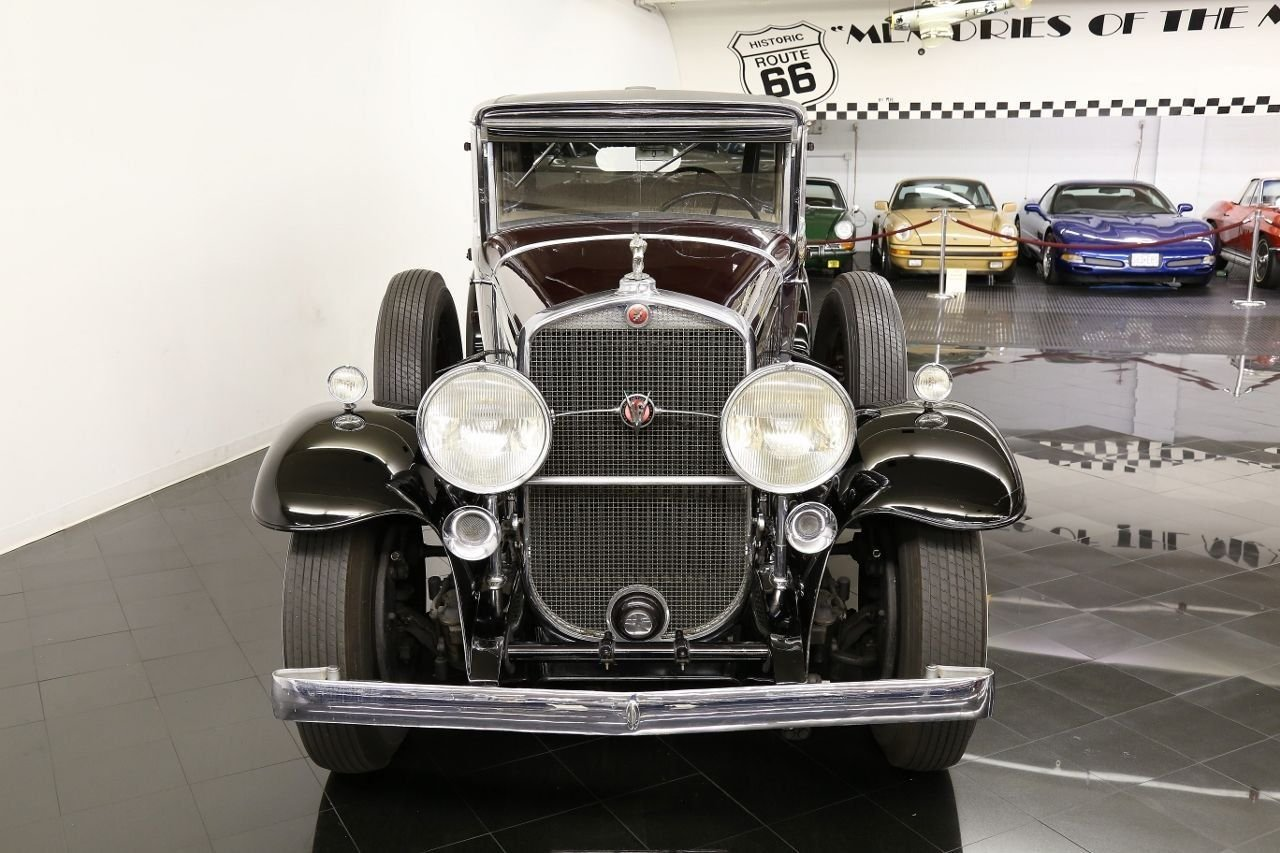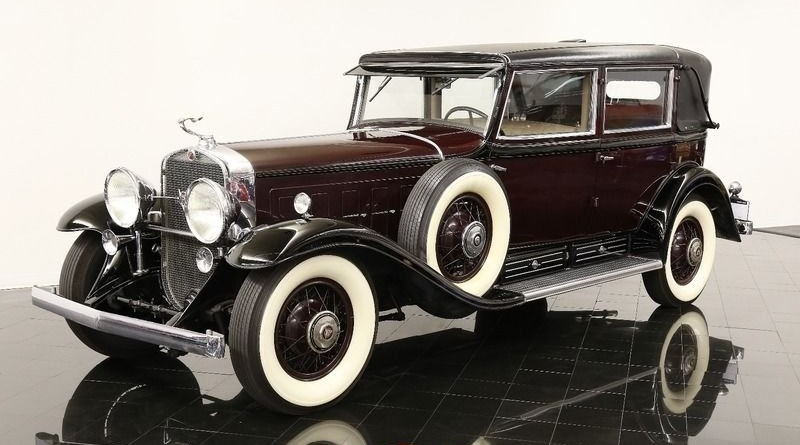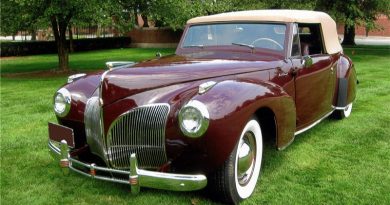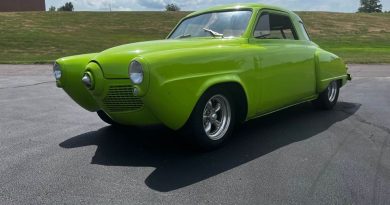1931 Cadillac V-16 Madam-X Landau Sedan
In December 1929, weeks after the advent of the Great Depression, Cadillac President Lawrence P. Fisher announced that Cadillac would build the ultimate luxury car, and introduced it to the world in 1930 as the V-16. It was to be the first car with under hood design considerations. Styled by Owen Nacker, the polished black enamel contrasting with brushed aluminium accents on the valve covers, pleated fuel lines, a false firewall to conceal necessary wiring and plumbing from view, and ignition wiring hidden under covers accented by colourful cloisonné knobs. Cadillac produced V-16’s from 1930 to 1939, albeit in very small numbers.

“Madame X” refers to a large 1884 “portrait by John Singer Sargent of a young socialite named Virginie Amélie Avegno Gautreau. She was an American expatriate who married a French banker. She became notorious in Parisian high society for her beauty and rumored infidelities.” The painting was risqué for its time because of the plunging (i.e., revealing) neckline. The term as used on the Cadillac was applied to the “41” series bodies built in Detroit because it had an 18 degree flat, crank-up (V-V) windshield which “revealed” the occupants of the car. Possibly the term was used for this car because it was as big and bold as the painting of Madame X which was 2083mm tall and 1092mm wide.

Unlike contemporary engine design of the 1930s, the Cadillac V16 had barely a trace of unsightly wiring; everything was either carefully routed or concealed. Spark plugs were located on the inboard side of the engine and their wires secreted beneath a styled cover in the cylinder valley.
The Cadillac V16 was basically two inline eights sharing a common crankshaft. The cylinder banks were placed at a very narrow 45 degree angle and each had its own independent fuel and exhaust system. The engine used overhead valves, a design not previously seen on a Cadillac, and hydraulic valve adjustment, an industry first, which contributed to the V16’s exceptionally smooth and near silent operation. With a 3 x 4 inch bore x stroke, displacement was 452 cubic inches, (thus the model designation 452), with an output conservatively rated at 165 horsepower, (later increased to 185 horsepower) and delivered through a three-speed transmission.
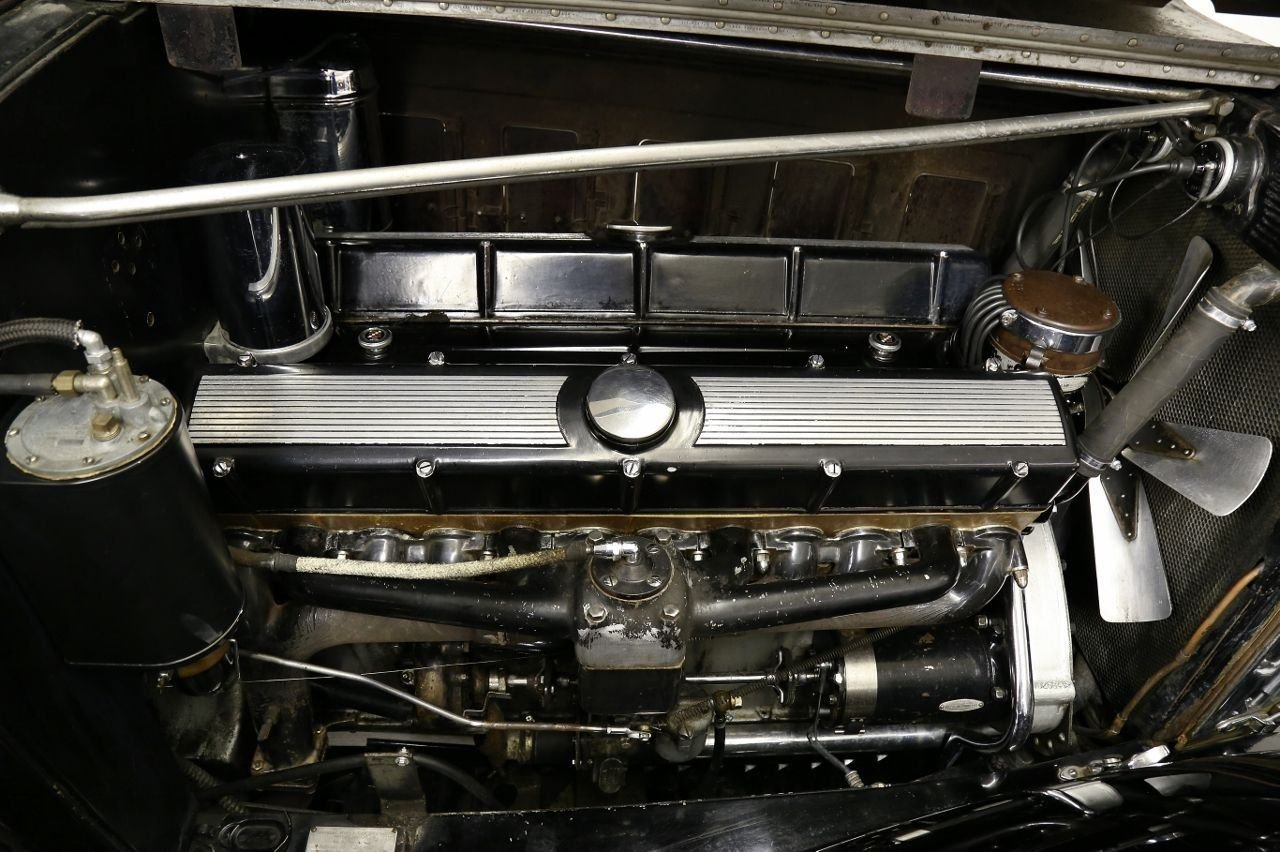
The name “Madame X” was applied to the style, after a famous stage play of the era. It was a name never used by Cadillac, but has been enthusiastically adopted by collectors. These bodies were designed and built by Fleetwood. This extremely rare 1931 Cadillac V-16 uses the Fleetwood body style designation of 4155. The proper name for this particular body style, as designated by Fleetwood, is an Imperial Landaulet Cabriolet. It is one of only eighteen 4155 landaulet body styles built for the V-16 chassis.
This vehicle is predominantly original having only had some cosmetic restoration over the years, which has served well to protect and preserve this impressive motorcar. The body is extremely straight, solid and tight. The doors open and close with a solid feel and fit the body with even gaps and margins. The body appears to retain all of its original wood, which has been well preserved and today remains solid throughout. Numerous pieces of wood found on this body show both the Fleetwood name as well as the body style and body number clearly stamped.

This Imperial 1931 Cadillac V-16 Madam-X Landau Sedan is ideal for enjoyment on Classic Car Club of America CARavans and other tours. It will certainly be a welcomed participant at any of the nations leading Concours d’Elegances.
